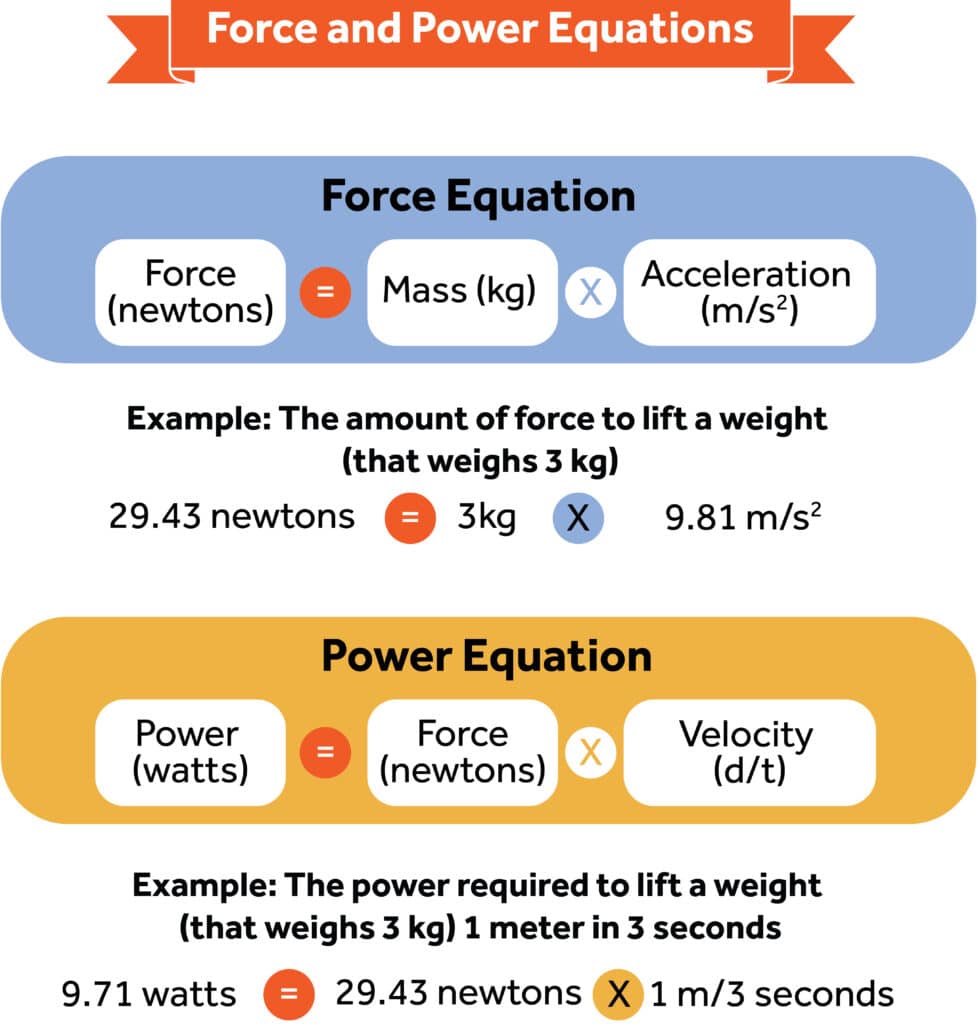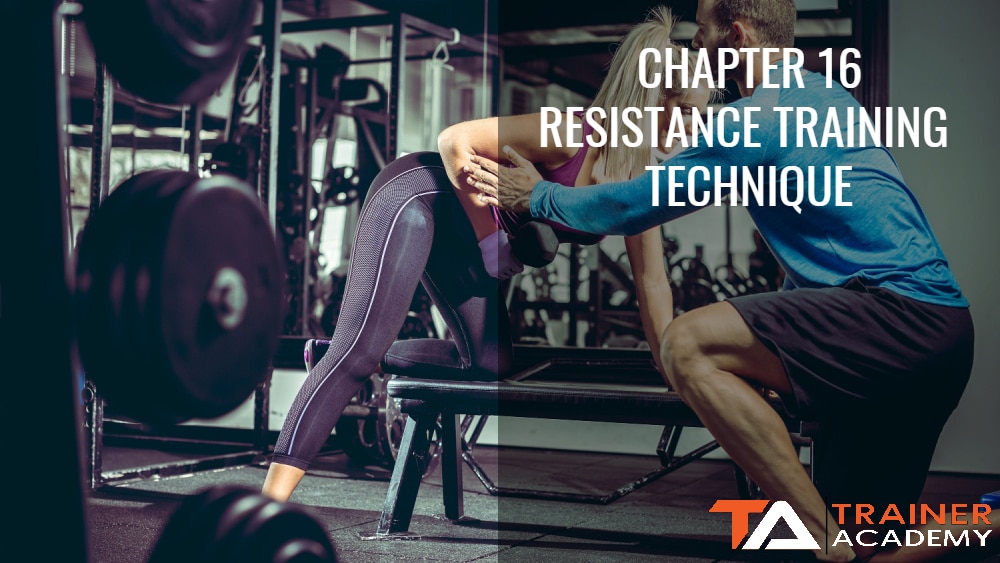Biomechanics is defined as the study of the mechanical laws relating to the movement or structure of living organisms.
In the context of the human body, biomechanics defines how different forces act on the musculoskeletal system and how the body tissue responds to these forces. Biomechanics focuses on the actual movement of the body, the different body parts, and how they move with each other.
Introduction to Biomechanics and Kinesiology
The word kinesiology stems from the Greek words Kinesis “to move” and –ology “to study.” Kinesiology is defined as the scientific study of human movement and how physical activity, sport, and exercise affect quality of life and sports performance.
Kinesiology focuses on the physiology behind the adaptations that are created as a result of chronic and acute physical activity or exercise. Kinesiology covers a broad range of topics, ranging from cardiovascular adaptations to single bouts of exercise to the effects and adaptations to exercising at altitude.1
As a personal trainer, it is important and necessary to understand both the gross anatomy and the intricacies of the physiology of the body.
Properly coaching and designing exercise programs for clients requires a basic understanding of biomechanics and kinesiology to ensure you select the best exercises for each client and keep them safe while they perform each exercise technique.
Anatomical Terms
These terms are used to describe the different positions of specific anatomical structures, anatomical locations, movements, and positions.2, 3
- Anatomical position – standing upright, facing forward, hands to the side of the body with the palms facing forward, legs parallel with the feet flat on the floor facing forward
- Anterior – towards the front of the body
- The sternum is anterior to the spinal column
- Posterior – towards the back of the body
- The hamstrings are part of the posterior chain muscles
- Midline – the imaginary median line that spans from the head to the foot and serves as a reference point in the body
- Medial – towards the midline of the body
- The sternum is medial to the rib cage
- Lateral – away from the midline of the body
- Bending the neck to either side of the head is lateral flexion
- Superior – toward the head, above
- The head is superior to the neck
- Inferior – toward the feet, below
- The diaphragm is inferior to the heart
- Proximal – closer to or toward the torso
- The elbow is proximal to the hand
- Distal – away from the torso
- The toes are distal to the knee
- Cephalad – toward the head
- The cervical vertebrae move cephalad from C7 to C1
- Caudal – toward the tail or feet
- The cervical vertebrae are caudal from C1 to C7
- Superficial – toward the surface or skin of the body
- The skin is superficial to the muscles
- Deep – toward the inside or core of the body
- The organs are deep to the skin
- Origin – the proximal attachment of a muscle
- The biceps brachii originates on the coracoid process
- Insertion – the distal attachment of a muscle
- The quadriceps insertion point is the patella
- Prone – lying flat, facing downward, laying on one’s stomach
- The patient was in a prone position for the spinal surgery
- Supine – lying flat, facing upward, laying on one’s back
- The patient was sleeping in a supine position
Planes of Motion
The human body is divided into three planes of motion: the sagittal plane, the frontal plane, and the transverse plane. Most movements occur in multiple planes of motion to varying degrees, with the majority of the movement occurring in the primary plane.
The sagittal plane divides the body into left and right sections. Movements in the sagittal plane include squats, deadlifts, rows, horizontal pressing, and most fundamental gross motor exercises.
The frontal plane divides the body into front and back sections. Movements in the frontal plane include side steps, lateral lunges, and lateral dumbbell raises. Virtually all lateral movement occurs in the frontal plane.
The transverse plane divides the body into upper and lower sections. Movements in the transverse plane include Russian twists, golf swings, and rotational chest passes. Most athletic movements that involve rotational movement occur in the transverse plane.

Open-Chain vs Closed-Chain Motion
Open-chain motion refers to the movement of the distal segment of a bone about a fixed proximal segment. An example of an open-chain movement would be doing a bicep curl with a dumbbell.
A closed-chain movement refers to the movement of the proximal part of a bone about a fixed distal segment. An example of a closed-chain movement would be a push-up.
Coaching Application


An understanding of the planes of motion and anatomical reference points is important for personal trainers for several reasons.
Breaking down complex movements into an understanding of the muscle actions, including both movement and stabilization, allows a coach to have a more nuanced understanding of technique observation and coaching when demonstrating, cueing, and correcting movements.
Furthermore, when designing exercise programs, coaches should generally include exercise movements in all planes of direction – this can include both isolated exercises as well as compound movements with multiple planes of motion.
Finally, an understanding of biomechanics is important for a trainer explaining to their clients why they selected specific exercises in the event their client asks about that aspect of the exercise program.
Muscle Actions and Muscle Action Spectrum
Every muscle in the body has an origin and an insertion. The origin of a muscle is the fixed end of the muscle. The origin of a muscle attaches to the bone, and this end of the muscle does not move. 2, 3
The insertion of a muscle is the site at which the muscle connects to the bone that moves.
When referring to muscles and the movement they create, they are classified as either primer movers/agonists, antagonists, or synergist muscles.
The prime mover or agonist muscle is the primary muscle responsible for a given movement. The antagonist muscle performs the opposite movement as the prime mover, and in some cases will resist the action of the agonist muscle. The synergist muscle or muscles will assist or help the agonist muscle with movement.
Muscle contractions are categorized by the changes in the length of the muscle during the contraction. A muscle fiber is going to create tension through myosin and actin cross-bridge cycling.
When a muscle is under tension, the muscle can remain the same length, shorten, or lengthen. When referring to a muscle contraction, the assumption is that the muscle is shortening, but the contraction only means that the individual is generating tension within the muscle fiber.
Muscle contractions can be categorized into 5 actions:
- Isotonic contraction
- Concentric contraction
- Eccentric contraction
- Isometric contraction
- Isokinetic contraction.
Isotonic Contraction
An isotonic contraction maintains constant tension in the muscle while the muscle lengthens or shortens. An isotonic contraction can only occur when the maximal force of contraction exceeds the total load on the muscle.
For example, during a bicep curl, the biceps muscle will only isotonically contract if the weight is not too heavy.
Examples of isotonic exercises include dumbbell bicep curls, barbell squatting, push-ups, and most traditional resistance exercises using weights.
Isotonic contractions are further categorized as concentric or eccentric.
Concentric Contraction
Concentric contraction occurs when the muscle action produces a force that can overcome an external load. To generate a concentric contraction, the muscle force produced must be greater than the load that it is carrying.
Consider the upward thrust during a bench press. In this case, the barbell acts as the external resistance against the pectoralis muscle. During the upward thrust, the sum of the force produced is greater than the resistance of the barbell pushing downward.
This results in the bar being moved upward or lifted by a concentric contraction.
Eccentric Contraction
An eccentric contraction is generated when the muscle is lengthened or elongated while still generating force.
During an eccentric contraction, the resistance applied to the muscle is greater than the force generated by the muscle, thus lengthening the muscle.
Cross-bridge cycling still occurs in this example. During exercise, the eccentric contraction is often referred to as the negative. For example, during a bicep curl, trainers may coach their client to focus on slowing down during the negative action of the bicep curl.
They are instructing their client to stay in the eccentric action longer to increase the time under tension.
Post-exercise muscle soreness is produced mainly by eccentric contractions. In fact, muscle tension is higher during an eccentric contraction than in isometric or concentric contractions.
Isometric Contraction
The word isometric literally means “same length.” The key aspect to note here is that the muscle length is not what is staying the same. The joint angle remains constant. The word contraction means shortening so an isometric contraction does involve internal processes that shorten the muscle fibers.
The purpose of isometric contractions in exercise is often stabilizing the joints and spine so that prime movers can safely and effectively apply muscle force to the resistance.
For example, during a squat the hip adductors and abductors contract isometrically to prevent unwanted movement in the frontal and transverse planes.
Isometric exercises can be done with or without weights. Isometric exercises are useful because they require relatively minimal equipment and can be done by most of the general population regardless of physical activity levels.
The elbow plank is a classic example of an isometric exercise. During a plank, the client is resisting gravity using their body weight.
Resisting the pull of an elastic band without additional movement is another common example of isometric muscle action.
Isokinetic Contraction
An isokinetic muscle contraction occurs when the speed of the muscle contraction remains constant while the length of the muscle changes. During an isokinetic contraction, the force that is produced by the muscle does not remain constant. The force of the contraction is modulated by the position of the joint in its range of motion and the participation effort of the subject.
An isokinetic contraction differs from an isometric contraction in that an isokinetic contraction retains a constant speed while an isometric contraction has a constant muscle length. Isokinetic muscle loading is similar to isometric contractions in that they can be either concentric or eccentric. In an isokinetic concentric contraction, the muscle shortens or lengthens while under load.
An interesting application of isokinetic contractions comes in the form of very expensive biomechanical equipment. An isokinetic dynamometer is a machine that is used to control the speed of a muscle contraction.
These devices are typically used in research settings as well as rehabilitation settings. The ability to modulate and control the speed of contraction of any joint in the body allows practitioners and researchers to determine things such as muscle fiber type, create a force velocity curve, and determine the optimal length of a joint angle for force production.
Most isokinetic exercises require an isokinetic dynamometer or other specialized equipment to keep the speed of the contraction constant.
There are some bodyweight exercises that can be performed such as squats where the individual focuses on moving through the exercise at a constant speed.
However, most of the time, isokinetic exercises are going to be performed as part of a rehabilitation or recovery program.
Biomechanical Definitions
Force, Muscle Force, and Power
To standardize terms for the measurement of energy, force, work, and power, scientists use System International (SI) units. Force is a simple way to represent load in biomechanics and can be defined as the action of one object to another.
Force can be external or internal. Force is measured as the product of the mass of an object in kilograms and acceleration in meters per second squared. When calculating force in most traditional resistance exercises, the acceleration used is going to be gravity, which is commonly approximated as 9.81m/s2.

There are multiple types of force that can act on the human body.
These include:
- Motion forces
- Internal forces
- External forces
- Reactionary forces
Biomechanics focuses both on how the different forces act on the musculoskeletal system as well as how the body tissue responds to these forces.
Internal forces are produced by muscle action within the body and create movement. External forces act on the body and in practical terms are typically the ground force acting on the body during ground contact as well as the external resistance of weights. In the case of swimming, running, and cycling, fluid resistance from the water or air, respectively, adds another measurable external force.
Internal movements cannot cause a change to the motion of the center of gravity of the human body without the assistance of external forces. What this means is that the human body is only able to change direction of movement if it is in contact with another external object.
For example, a goalkeeper jumping to catch a penalty kick cannot change direction after the first jump until they make contact with the ground.
Upon landing, the goalkeeper can then push against the ground and change the direction of motion.
In this case, the ground is the external force that will allow the goalkeeper to change the direction of motion. The same internal muscle forces activated without the ground present cannot result in a change of motion.
Internal Forces
Internal forces are the result of muscle actions, specifically the cross-bridges formed by actin and myosin during muscle contraction, that result in muscle force generation. The outcome of this tension is an internal force within the human body. This internal force ultimately acts on the bones of the skeletal system via the tendons, resulting in angular motion about a joint.
External Forces
External forces are the forces that result from the human body interacting with its environment.
External forces can be categorized into contact forces and non-contact forces. From a biomechanics perspective, most forces humans encounter will be external contact forces occurring at the site of contact as the limbs interact with the ground.
The prime example is foot contact with the ground that occurs with any standing or walking-based activity.
The most common non-contact external force is gravitational force, which acts on all objects on Earth via the Earth’s gravitational field. Gravity affects objects even if they are not in direct contact with the ground.
Power
The definition of power in the context of biomechanics is the rate at which mechanical work is performed. Power is measured in watts (W). A watt represents 1 joule per second rate or energy production or consumption.
To find the amount of energy consumed in joules, one would multiply the power output in watts by the number of seconds that output was sustained.
The power produced when lifting an object, such as a piece of resistance equipment, can also be calculated if the mass of the equipment, vertical distance lifted, and time to complete the movement are known.
When analyzing a movement as simple as moving a dumbbell vertically, an individual must oppose the force of gravity that is acting on the mass of the dumbbell through a specific displacement, or change in height, during a duration of time.
To determine power from this, one would take the product of the force and the displacement to determine the work in joules which could then be divided by the time it took to complete the movement to determine the power in watts.
The simplest equation to determine power is as follows: power = force x velocity.
Power is typically used to determine output across time. For example, when on a cycle ergometer, power is measured in watts as a metric as well as total work done in joules.
Overall, power output is a useful metric when prescribing exercise intensity and measuring improvements in cardiorespiratory fitness.
Length-Tension Relationship
The length-tension relationship explains the difference in tension production as a product of the length of the muscle changes. As a muscle increases in length, the force that the muscle is producing will also increase.
This happens because of the interaction between the cross-bridges of our muscles. At shorter lengths, there are fewer cross-bridge interactions, resulting in reduced tension development.
At higher lengths, it’s possible to lengthen too much and decrease the number of cross-bridge interactions, reducing the potential for contractile protein binding and decreasing the muscle’s force-generating capacity.
At the optimal length of the muscle, there is a maximal number of cross-bridge interactions, which results in maximal tension or force development.
Force Velocity
The link between force and velocity is illustrated by the force-velocity curve. Because of the inverse nature of this connection, the force will decrease as velocity rises. For specific adaptations, a coach must be aware of the physiological and biomechanical distinctions between recommending a 1RM deadlift and a 5RM jump squat.
Understanding this relationship is crucial since one exercise will result in larger forces and lower velocities than the other. A decrease in the amount of time available for cross bridges to form is assumed to be the cause of this trade-off between force and velocity. More time results in more cross-bridges, and more cross-bridges mean a greater contractile force.
Slower-paced activities, therefore, enable the athlete to create more cross-bridges and generate more force. Exercises performed at a higher velocity give cross bridges less time to develop, resulting in less force being produced. As a result, distinct exercises and intensities have been divided into different force-velocity curve segments.
Levers
A lever system is a rigid rod that moves at a fixed point called a fulcrum when a force is applied to it. Movement in the human body is possible using lever systems formed by the muscles and joints working together. Understanding levers in the body helps a coach understand how movement is possible.
Muscles are attached to bones by tendons. The bones of the skeleton act as lever arms, with the joints as pivot points, allowing muscles to produce movement.
Any lever system consists of three parts: effort, load, and fulcrum. The effort to move weight is provided by the muscle, the load is provided by the weight of the body and any added resistance, and the fulcrum is the joint itself.
In a first class lever, the fulcrum is the middle component and lies between effort and load. There are few exercises that use a first-class lever system in the body; triceps extension at the elbow is one example. Elbow extension is seen during a throwing motion or tennis stroke, as well as a triceps cable extension.
In a second class lever system, the load is the middle component and lies between the fulcrum and the effort exerted. Exercises involving plantarflexion at the ankle (raising the heels) are second class lever systems. Examples include calf raises or plantarflexion when jumping upwards while performing a layup in basketball. The second class leverage system tends to increase effort effectiveness. That means it’s more effective at overcoming resistance than it is at creating speed.
Most of the movements of the human body fall into the third class lever system. In a third class lever system, the force is the middle component, lying between the fulcrum and the load. There are many examples of lever systems that involve flexion and extension at the knee joint.
These movements are involved in running, jumping, and kicking. During flexion of the knee, the point of insertion of the hamstrings on the tibia is the point of effort, the knee joint is the fulcrum, and the weight of the leg is the load. The third class lever system is used to increase body speed and allow for a wide range of motion.



Torque and Rotary Motion
Torque is another key biomechanical concept. In physics, torque is defined as the rate of change of an object’s angular momentum. The following will explain what this implies when applied to biomechanics and kinesiology.
Since all human movement occurs around a pivot point, the rate of movement is most accurately expressed as the rate of change in angular momentum.
An object will move in the same linear direction as the force if a force is applied to it in a linear direction and the object is not fixed at any point. For instance, when someone pushes a book across a desk, it will glide in the same direction as their hand, if they were to push close to the center. Linear motion is the name given to this kind of motion. Forces that push or pull cause linear motion.
The body can also move in a way known as rotational motion. When a force is given to one part of an object while another part remains immobile, the object rotates. When a muscle pulls on one end of a bone while the other end is fixed, rotational motion occurs in the body.
The non-fixed end moves as a consequence. For instance, there is rotary motion at the knee joint when the proximal end of the hamstring muscles is held stationary at the pelvis while the distal end pulls on the tibia and fibula during knee flexion.
A force that is created by rotating motion is known as torque. Torque is mathematically defined as the product of multiplying the force exerted on the object by the distance of the force from the fulcrum or pivot point.

Summary
Biomechanics and kinesiology are key topics to understand as a fitness professional.
Understanding the planes of motion allows for better exercise programming in terms of both performance and injury prevention. Furthermore, being able to recognize the movement in the different planes aids in technique observation and cueing for fitness clients.
Basic physics, as it applies to the human body, also assists personal trainers in understanding the various forces involved in exercise and their implications in terms of progress tracking, athletic performance, and preventing injuries.
References
- Wilson Dl. The Kinesiology Activity Book. Boston (MA): McGraw-Hill, 2011.
- Hall S. Basic Biomechanics. 6th ed. Boston (MA): McGraw- Hill; 2011.
- Winter DA. Biomechanics and Motor Control of Human Movement. 4th ed. New York (NY): Wiley; 2009.
- Delorme TL, Watkins AL. Techniques of progressive resistance exercise. Arch Phys Med. 1948;29:263-73.
- Holland T. Ten important personal training guidelines. Am Fitness. 2001;19 (l) :42.












